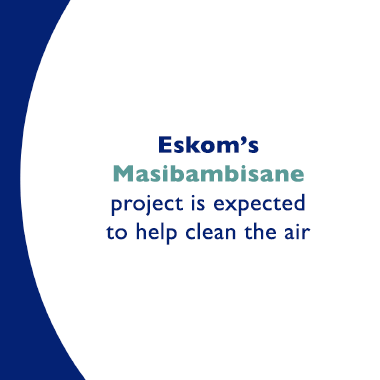Eskom conducted a pilot project on 120 RDP houses in KwaZamokuhle (adjacent to Hendrina town) from 2015 to 2017 in order to test interventions most likely to reduce emissions from burning coal and wood by households. The interventions tested include: - Installing insulated ceilings
- Installing insulated ceilings and insulation on three walls
- Replacing the coal stoves with low emission coal stoves
- Replacing the coal stoves with liquid petroleum gas (LPG) heaters and stoves
- An electricity subsidy in the winter months.
Each household was given an insulation retrofit and either a low emission coal stove, or an LPG heater and stove, or an electricity subsidy. The main learnings from the pilot project include:- Domestic coal burning in KwaZamokuhle accounts for more than 50% of the ambient fine particulate matter
- Indoor air quality is mainly determined by outdoor air quality, so interventions in only a few houses have little impact on indoor air quality
- Mean monthly income is less than R2000 per household. Households spend around R200-R300 per month on coal in winter. Affordability drives energy carrier selection.
- Around 30% of households live in informal dwellings. A solution is still needed.
- Residents were very willing to participate in all interventions (>80%) and did not want their old coal stoves back at the end of the pilot project.
- LPG was well received
- A stove swop AND housing insulation are needed to reduce domestic coal burning. An electricity subsidy without removing coal stove INCREASES coal use.
- Poor construction of RDP houses poses challenges for installation of insulation. Draft proofing is also needed.
|



